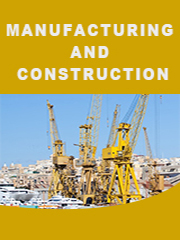Report overview
Forging is the operation where the metal is heated and then a force is applied to manipulates the metals in such a way that the required final shape is obtained. Forging is generally a hot working process though cold forging is used sometimes.
Press forging works by slowly applying a continuous pressure or force, which differs from the near-instantaneous impact of drop-hammer forging. The amount of time the dies are in contact with the work piece is measured in seconds (as compared to the milliseconds of drop-hammer forges). The press forging operation can be done either cold or hot.
The main advantage of press forging, as compared to drop-hammer forging, is its ability to deform the complete work piece. Drop-hammer forging usually only deforms the surfaces of the work piece in contact with the hammer and anvil; the interior of the work piece will stay relatively unreformed. Another advantage to the process includes the knowledge of the new part's strain rate. We specifically know what kind of strain can be put on the part, because the compression rate of the press forging operation is controlled.
This report aims to provide a comprehensive presentation of the global market for Forging Presses, with both quantitative and qualitative analysis, to help readers develop business/growth strategies, assess the market competitive situation, analyze their position in the current marketplace, and make informed business decisions regarding Forging Presses. This report contains market size and forecasts of Forging Presses in global, including the following market information:
Global Forging Presses Market Revenue, 2018-2023, 2024-2029, ($ millions)
Global Forging Presses Market Sales, 2018-2023, 2024-2029, (Units)
Global top five Forging Presses companies in 2022 (%)
The global Forging Presses market was valued at US$ 9022.9 million in 2022 and is projected to reach US$ 11740 million by 2029, at a CAGR of 3.8% during the forecast period. The influence of COVID-19 and the Russia-Ukraine War were considered while estimating market sizes.
Global Forging Presses key players include Schuler, Komatsu, Aida, JIER, Yangli Group, etc. Global top five players hold a share about 30%.
China is the largest market, with a share about 60%, followed by Japan and South Korea, having a total share about 15 percent.
In terms of product, Mechanical is the largest segment, with a share about 75%. And in terms of application, the largest application is Automotive, followed by Hardware Tools, General Machine, Home Appliances, etc.
We surveyed the Forging Presses manufacturers, suppliers, distributors and industry experts on this industry, involving the sales, revenue, demand, price change, product type, recent development and plan, industry trends, drivers, challenges, obstacles, and potential risks.
Total Market by Segment:
Global Forging Presses Market, by Type, 2018-2023, 2024-2029 ($ Millions) & (Units)
Global Forging Presses Market Segment Percentages, by Type, 2022 (%)
Mechanical
Hydraulic
Global Forging Presses Market, by Application, 2018-2023, 2024-2029 ($ Millions) & (Units)
Global Forging Presses Market Segment Percentages, by Application, 2022 (%)
Automotive
Hardware Tools
General Machine
Home Appliances
Others
Global Forging Presses Market, By Region and Country, 2018-2023, 2024-2029 ($ Millions) & (Units)
Global Forging Presses Market Segment Percentages, By Region and Country, 2022 (%)
North America
US
Canada
Mexico
Europe
Germany
France
U.K.
Italy
Russia
Nordic Countries
Benelux
Rest of Europe
Asia
China
Japan
South Korea
Southeast Asia
India
Rest of Asia
South America
Brazil
Argentina
Rest of South America
Middle East & Africa
Turkey
Israel
Saudi Arabia
UAE
Rest of Middle East & Africa
Competitor Analysis
The report also provides analysis of leading market participants including:
Key companies Forging Presses revenues in global market, 2018-2023 (Estimated), ($ millions)
Key companies Forging Presses revenues share in global market, 2022 (%)
Key companies Forging Presses sales in global market, 2018-2023 (Estimated), (Units)
Key companies Forging Presses sales share in global market, 2022 (%)
Further, the report presents profiles of competitors in the market, key players include:
Aida
Yangli Group
Yadon
Xuduan
World Group
TMP
Tianduan Press
Sumitomo
Stamtec
SMS Group
Siempelkamp
SEYI
Schuler
Rongcheng
QIQIHAR NO.2
Nantong Metalforming Equipment
Mitsubishi
Mecolpress
Lasco
Kurimoto
Komatsu
Jsc"Tjazhmekhpress"
JIER
J&H
Isgec Heavy Engineering
Huzhou Machine Tool
Hitachi Zosen
Hefei Metalforming
First Heavy
Ficep
Erzhong
Erie
Chin Fong
BRUDERER AG
Beckwood
Amada
Ajax-Ceco
Fagor Arrasate
Outline of Major Chapters:
Chapter 1: Introduces the definition of Forging Presses, market overview.
Chapter 2: Global Forging Presses market size in revenue and volume.
Chapter 3: Detailed analysis of Forging Presses manufacturers competitive landscape, price, sales and revenue market share, latest development plan, merger, and acquisition information, etc.
Chapter 4: Provides the analysis of various market segments by type, covering the market size and development potential of each market segment, to help readers find the blue ocean market in different market segments.
Chapter 5: Provides the analysis of various market segments by application, covering the market size and development potential of each market segment, to help readers find the blue ocean market in different downstream markets.
Chapter 6: Sales of Forging Presses in regional level and country level. It provides a quantitative analysis of the market size and development potential of each region and its main countries and introduces the market development, future development prospects, market space of each country in the world.
Chapter 7: Provides profiles of key players, introducing the basic situation of the main companies in the market in detail, including product sales, revenue, price, gross margin, product introduction, recent development, etc.
Chapter 8: Global Forging Presses capacity by region & country.
Chapter 9: Introduces the market dynamics, latest developments of the market, the driving factors and restrictive factors of the market, the challenges and risks faced by manufacturers in the industry, and the analysis of relevant policies in the industry.
Chapter 10: Analysis of industrial chain, including the upstream and downstream of the industry.
Chapter 11: The main points and conclusions of the report.
